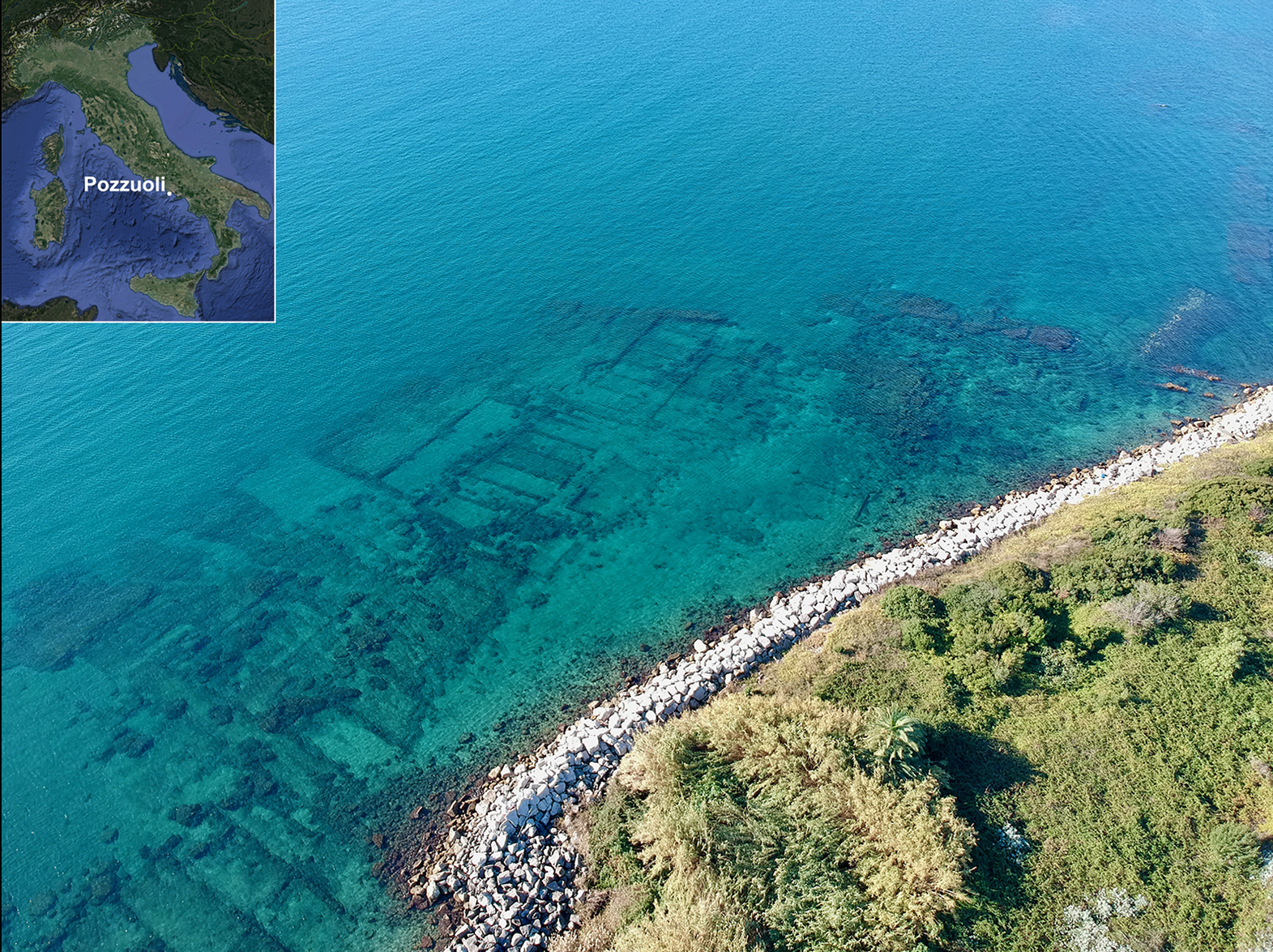
Most people associate ancient Nabataean civilization with Petra, the roughly 9,000-year-old “Rose City” carved out of sandstone in the deserts of Jordan—and for good reason, as it’s one of the most well-known and impressive UNESCO World Heritage Sites on the planet. While most Nabataean architecture is limited to the Middle East, one of their temples has been found in Italy, near the town of Pozzuoli, partially submerged beneath the sea.
Under the protection of the Roman Republic, Pozzuoli (then known as Puteoli) developed into a bustling port for trading ships carrying goods across the Mediterranean. During the reign of emperor Augustus (31 B.C.E. to 14 C.E.), Roman builders filled the city with storehouses, which in turn were filled with grain exported from Egypt and North Africa. These remained in operation until volcanic activity reshaped Puzzuoli’s coastline, allowing the sea to swallow large parts of the city.
Roman fresco depicting the Pozzuoli port (1st century C.E.). National Archaeological Museum, Naples, Italy. Photo: PHAS/Universal Images Group via Getty Images.
Other casualties of this natural disaster included a Nabataean temple. According to a study published in the academic journal Antiquity in September, this temple was built around 2,000 years ago, not long after the time that the Roman Empire conquered and subsequently annexed the Nabataean Kingdom, prompting many of its residents to migrate to different parts of the empire, including Pozzuoli.
The study presents the results of a 2023 project called Between Land and Sea, a collaboration between the University of Campania and the Italian Ministry of Culture that enabled researchers to survey structures and artifacts submerged beneath Pozzuoli’s coastline. The Nabataean temple—thus far the only example found outside the Middle East—measures 32 by 16 feet and consists of two large rooms with altars made from marble that seem to have been originally decorated with “sacred stones.”
Nabataean altar pieces with recesses for sacred stones. Photo: M. Stefanile / Antiquity.
The temple stands as an unlikely testament to Roman cosmopolitanism. Where other ancient civilizations shunned outsiders, the Romans, at least for part of their history, granted citizenship to people from non-Roman cultures and ethnicities, allowing their customs to mix and mingle. The Nabataean temple is dedicated to a Nabataean god, Dushara, but the inscription mentioning this god’s name is written in Latin, “Dusari sacrum,” while the building’s architectural style is decidedly Roman and very different from Petra.
“The edification of the sanctuary was possible when the Nabataeans enjoyed the freedom and opportunities offered by the friendship with Rome and the independence of their motherland,” the study reads, adding that Nabataeans in the Puzzuoli region were able to procure significant wealth and status between the reigns of Augustus and Trajan (98–117 C.E.), participating in the Mediterranean trade of luxury goods from Jordan and Gaza by way of Puzzuoli.
The study claims that much of this wealth and influence evaporated after the Nabataean Kingdom fell to Trajan’s legions in 106 C.E., allowing Rome to assume full control over their trade networks. Dwindling prosperity may have contributed to the Puzzuoli temple’s demise, which, according to the study’s lead author, maritime archaeologist Michele Stefanile, may have been purposefully buried in the 2nd century C.E., before the surrounding area was reclaimed by the sea.